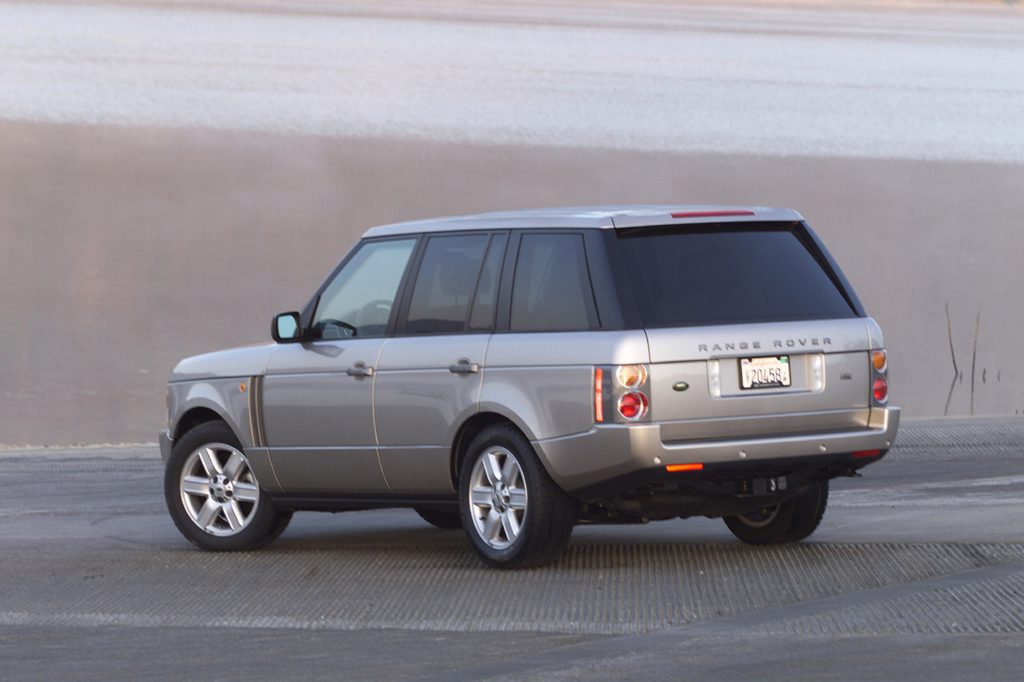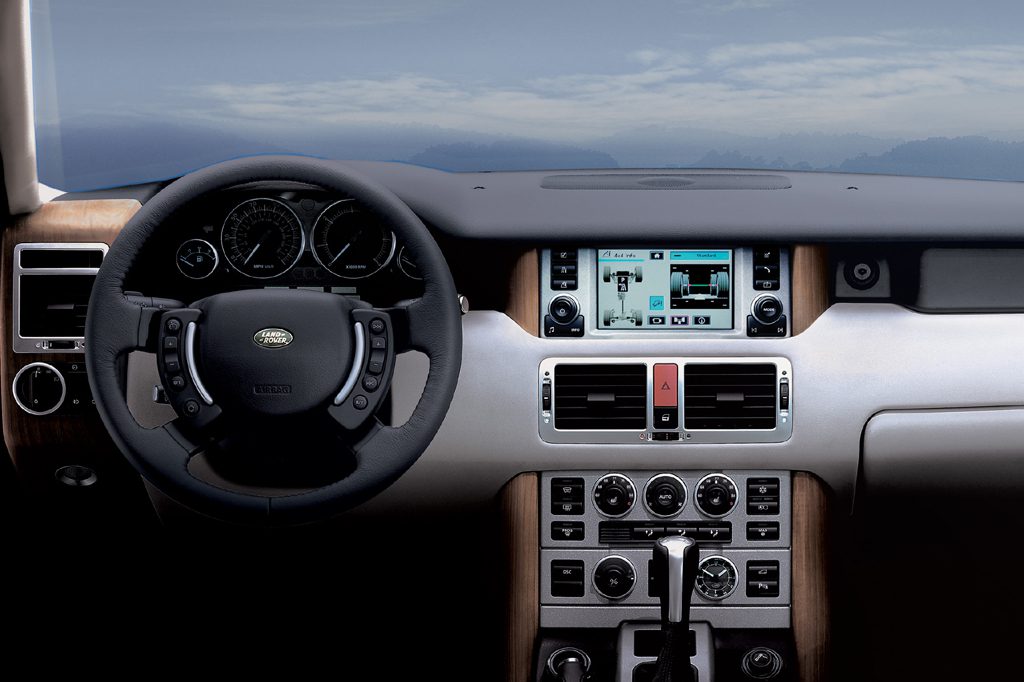| Premium large SUV; Built in England |
|
|
| Good condition price range: $11,500 – $48,500* |

2005 Land Rover Range Rover

2005 Land Rover Range Rover

2005 Land Rover Range Rover

2005 Land Rover Range Rover
| Pros: |
|
| Cons: |
|
The new-generation Range Rover is no less adept off-road than the old one, but pulls ahead for on-road competence and refinement. In fact, it stands out among luxury SUVs for the balance of on-road manners, off-road ability, and high-class accommodations. There’s still nothing else like it–which is mostly what you pay for, new or used. For Range Rover’s well-heeled buyers, little else will do, and updates polished its upper-crest credentials. Few rivals are as high-tech as this Range Rover, but many offer most of its features and capabilities for much less money. The Supercharged model adds real muscle–for a lot of additional dollars.
Overview
Land Rover replaced its aging luxury flagship sport-utility vehicle for 2003 with a redesigned Range Rover that was larger, more powerful, and more technically sophisticated.
Offered in a single HSE model, it marked only the third redesign in Range Rover’s 31-year history. Furthermore, this was the first with unibody construction and all-independent suspension.
Wheelbase grew by 5.3 inches, and overall length by 9.2 inches. Curb weight rose 400 pounds. Intended to compete with both luxury sedans and high-end SUVs, the newly styled five-passenger Range Rover was developed largely under BMW, which sold Land Rover to Ford in 2000. Several features mimicked those of BMW’s own X5 4.4i. Chief among them were a modified version of BMW’s V8 engine, with 68 horsepower more than the previous Land Rover 4.6 V8.
A five-speed automatic transmission with a separate gate for manual shifting replaced the four-speed unit. An traction/antiskid control was standard, as was Land Rover’s hill descent control that limited speeds going downhill, but now in reverse as well as forward. Every Range Rover had all-wheel drive with low-range gearing that could be accessed “on the fly” at low speeds. Standard antilock four-wheel disc brakes featured full-power emergency assist. The standard height-adjusting air-spring suspension adjusted from low entry/exit to high off-road modes.
Front torso side airbags were included, along with BMW’s front/rear head-protecting tubular side airbags. Rear torso airbags were unavailable. Retained was a two-piece clamshell tailgate, but standard 19-inch alloy wheels replaced 18s. Additional standard equipment included a front/rear-obstacle warning, navigation system, and a 60/40 split rear bench seat. Headlights, the windshield, and wiper/washers were electrically heated. Heated front/rear seats and steering wheel were optional.
Added in mid-September 2002 to the standard xenon low-beam headlights were xenon high beams. Rivals included the Lexus LX 470, Mercedes-Benz M-Class, and Toyota Land Cruiser, as well as the Cadillac Escalade and Infiniti QX56.
Yearly Updates
| 2004 Range Rover A new top-of-the-line Westminster LE model joined the carryover HSE. Limited to 300 units, the Westminstar had exclusive pearlescent black paint and ebony wood interior trim. Heated front/rear seats, a heated steering wheel, black leather upholstery, rain-sensing wipers, and a rear cargo net were installed in Westminsters. A new HSE Luxury Interior Package had 14-way power seats and additional leather trim, plus heated seats and a heated steering wheel. |
| 2005 Range Rover As Land Rover launched a new midsize LR3 sport-utility, the big Range Rover essentially stood pat. A new voice-activated navigation system was installed, and an available sound system included wireless cell-phone-link capability. |
| 2006 Range Rover Two new engines debuted for 2006, as Range Rovers received detail styling modifications. In addition to the HSE, the lineup included a new Supercharged model. Both used a Jaguar-originated V8. In the HSE, a 305-horsepower 4.4-liter V8 replaced the BMW-sourced 282-hp 4.4-liter. The Supercharged model got a 4.2-liter V8 that produced 400 horsepower, along with 20-inch wheels and Brembo-brand front brakes. The six-speed automatic transmission now included a manual shift gate. Satellite radio and DVD entertainment were newly available. A newly standard rearview camera used the dashboard screen to show what was behind, when the transmission was in Reverse. Land Rover launched a new, smaller Range Rover Sport model this year. |
| 2007 Range Rover A revised interior and a more sophisticated all-wheel-drive system were the 2007 changes for Land Rover’s flagship SUV. For ’07, it added Land Rover’s Terrain Response system, which had a console switch that enabled the driver to change suspension and powertrain calibrations to accommodate normal driving, slippery pavement, mud, sand, and low-speed off-roading. A locking center differential is standard, and a locking rear differential became available for ’07. Also standard were front side airbags, front and rear head-protecting tubular side airbags, and, for ’07, a driver knee airbag. All Range Rover interiors were revised for ’07 with new seats, dashboard, gauges, controls, and storage bins. |
| 2008 Range Rover The 2008 Land Rover Range Rover was largely unchanged. |
| 2009 Range Rover A new Autobiography Package for the Supercharged included upgraded leather upholstery, rear dual-zone automatic climate control, DVD entertainment, and unique wheels. |
